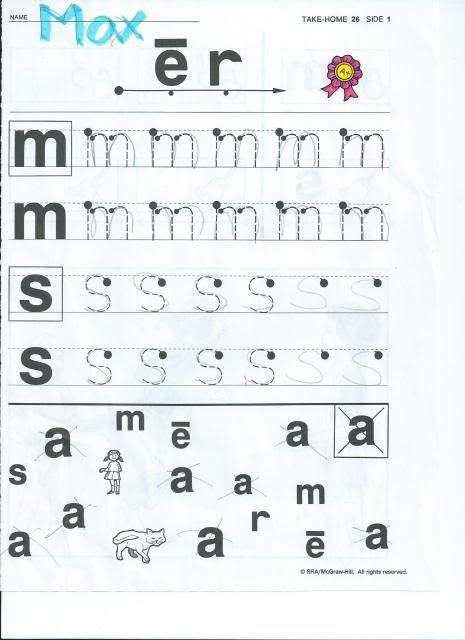On some stages, Mario can pair up with his dinosaur buddy Yoshi and use his tongue to grab items and spit them back at enemies. Players can also have fun with new items such as a drill that lets our hero tunnel through solid rock. Super Mario Galaxy 2, the sequel to the smash-hit galaxy-hopping original game, includes the amazing gravity-defying, physics-based exploration from the first game, but is loaded with entirely new galaxies and features to challenge and delight players. Super mario galaxy 2 wii iso ntsc download. You need for downloading.torrent files.

Publisher: SRA Reading Mastery The original Reading Mastery program was called DISTAR--Direct Instruction System for Teaching Arithmetic and Reading. These reading worksheets help support key literacy skills, such as sight words and reading comprehension. This book is based on the proven SRA DISTAR Reading Program. This program can work well with children as young as 3. The program takes 20 minutes a day and after 100 lessons your child will be reading on a 2nd grade level.

Publisher: SRA Reading Mastery The original Reading Mastery program was called DISTAR--Direct Instruction System for Teaching Arithmetic and Reading. These reading worksheets help support key literacy skills, such as sight words and reading comprehension. This book is based on the proven SRA DISTAR Reading Program. This program can work well with children as young as 3. The program takes 20 minutes a day and after 100 lessons your child will be reading on a 2nd grade level.
- Previous Topic | Next Topic
- You are not subscribed
Distar Curriculum
| Author | Message |
|---|---|
Subject: Distar reading program I am going to a school where Distar was used in the elementary LD program. I am unfamiliar with this program and how it is effectively used. Has anyone used this program and can offer some advice? Thanks. | |
Oh my- DISTAR is old, old old- I was trained in college twenty some odd years ago.. DISTAR is a very scripted direct instruction program for teaching phonics. It has been show to be quite effective with a variety of students- from those with learning impairments to some forms of LD. It is very boring for the teacher- but not necessarily for the student. It does work, but it shouldn't be the only tool in the arsenal. For very bright LD youngsters, my experience has been that the vocabulary is very simplistic and this gets boring. It isn't the skills- they need those- but they need to be couched in a way that appeals to them too. Robin | |
Distar is a form of modified alphabet, based on the Initial Teaching Alphabet or ITA. With Distar, you get truly phonetic reading/writing/spelling -- one letter equals one sound. The advantages are that it is direct and logical and absolutely one-to-one. Learning to read will go much faster and more easily at the beginning without all the battles learning irregular words. Writing is easier because if you can say it, you can write it. The disadvantages are that the teacher needs to learn the alphabet modifications and use them consistently (the advantage of the program being consistency, if you (the model) break the rules, the whole thing collapses); there are very very few books available outside of the texts, so it's hard to give the kids the real reading practice that is a vital part of a good program; and the handwriting developed out of this program is disgusting -- the modified alphabet forms don't follow our regular handwriting patterns, and after two or three years of initial learning using these forms, the student has ingrained lousy handwriting habits. Another thing that can be a disadvantage, if the program is poorly implemented (not the fault of the program itself, but of low expectations) is the question of weaning kids off the ITA and onto standard print. According to plan, this should be possible at least by mid-Grade 2, if not earlier. If it's left much later, you have kids who are literate in a foreign language and although they can read their specially prepared books in school, they can't read street signs or video games etc., and this is a frustration for both the kids and families. Also if standard spelling is not an expectation early enough, weaning off the ITA, you can raise a confused speller. I would use Distar myself for a kid who simply wasn't catching on to regular print -- in fact tried to use it once but the school board wouldn't approve it. I would also print up -- by hand if necessary, or by computer as there must be ITA fonts available -- oodles of copies of stories for the kids to read so they aren't locked into a ghetto of limited materials. You can photocopy the pictures with a white paper over the print and then rewrite in ITA with nice black marker. And once the kid hit a decent beginning reading level of around 200 words of vocabulary, I would start weaning onto regular print as fast as possible and introduce standard handwriting and spelling before habits got stuck. | |
Yes, 'DISTAR' is old, hving initally been developed over 30 years ago. What the previous writers don't seem to be aware of is that it hasn't stayed the same. Lots has happened since the inception of Direct Instruction. The original Distar reading program has undergone many changes and there are at least 3 separate reading programs now. IT WAS NEVER BASED ON ITA!!!! That is just not true. The orthography was to help children distinguish letters in their initial learning. It is phased out later in the program. In twenty years of teaching, I've found the only ones the letters bothered were the parents or teachers, certainly not the kids. The 'odd' orthography is in the Reading Mastery Program, the newer version of Distar. There is also a Direct Instruction reading program called Horizons which does not use the orthography. There is yet another DI program, Journeys, which is more of a language arts program. The new programs have outside reading oportunities available. I have used all the DI programs in my LD setting for many, many years and my students have been very successful. Boring! I don't find student success boring. Yes, I have to bring enthusiams to everything I teach. We also use the program in the regular classrooms at my school. Those students too are successful. The research on the effectiveness of DI is overwhelming. | |
Every good program deserves to have enthusiasts. As I said- I was taught DISTAR twenty some years ago- and it was boring. But I was a college student- and somewhat easily bored. Thanks for the kudos- I shall need to look more closely at this one. Robin | |
OK, it was twenty years ago that I saw Distar in what was supposed to be action.(It wasn't very active.) Yes, newer versions may be different. Yes, it is possible that my memory is imperfect. The large-engine Corvettes are extraordinarily fast and marginally civilized.' 1970–1972 [ ] In 1970, fender flares were designed into the body contours to reduce wheel-thrown debris damage. Automatic cable manager 12 activator rarity. The previously round dual exhaust outlets were made larger and rectangular in shape. New were egg-crate grills with matching front fender side vents and larger squared front directional lamps. I am NOT the person who claimed it was boring -- quite the converse, I'm the person who said I was trying to use it for some kids who needed it. I'm also the person who regularly posts about the need for those three dirty little four-letter words, time and hard work. Please make sure who you are yelling at. Thank you. English stylish fonts free download zip file. Here is Download links; All in 8 zip files part 1: part 2: part 3: part 4: part 5: part 6: part 7: part 8: over 5000 beautiful fonts (English) Please subscribe me give your likes & comments. As far as the ITA: Is Distar not the program that uses a sort of loopy shape, like a lower-case Greek omega, for the oo sound? And a combined ae letter and ee letter and so on for long vowels? And words spelled by sound, even in the reading texts? (I am speaking of the beginning levels, which is the topic I was discussing) And later, a little tiny e where it is silent? And capital letters that are just larger lower-case? If my memory serves me right, it was. This *is* a development out of the ITA. If the publishers have chosen to make up an entirely different reading program and market it under the same name, that's their business, and please excuse us for not knowing about their marketing ploys. | |
boring- and I thought I was clear that it was the adult who was likely to be bored- which often happens with those very minutely scripted programs. When students are succeeding they are never bored:) Robin |
